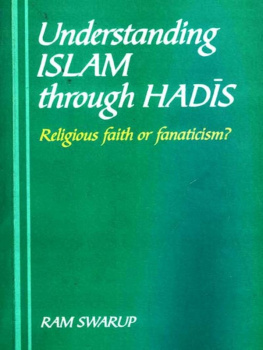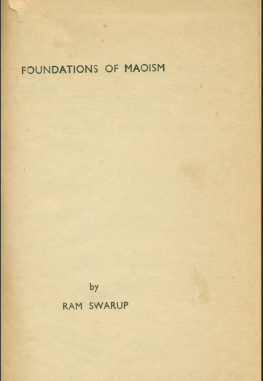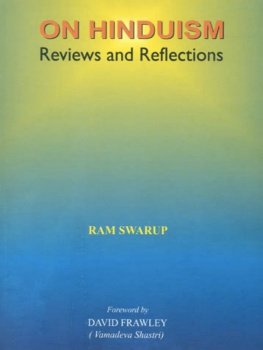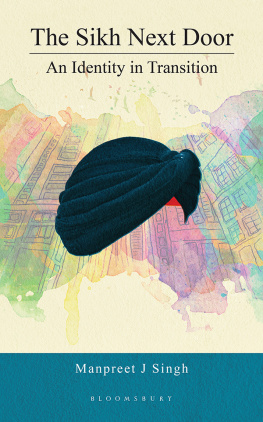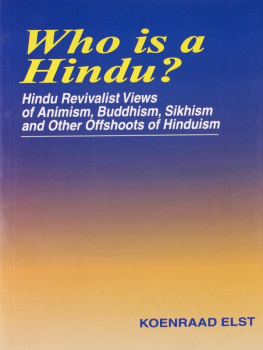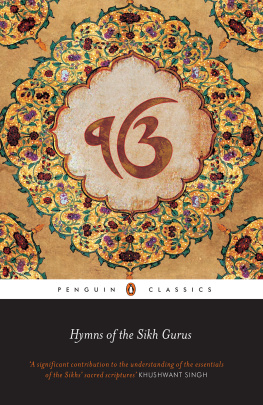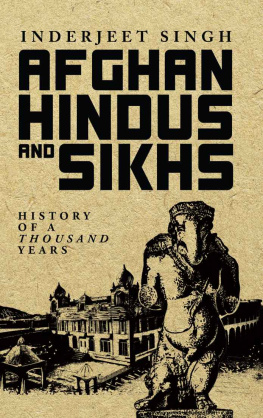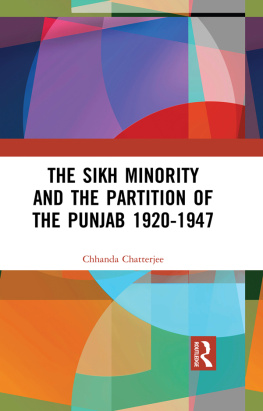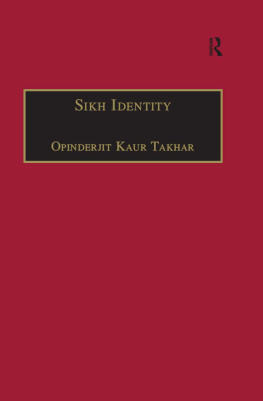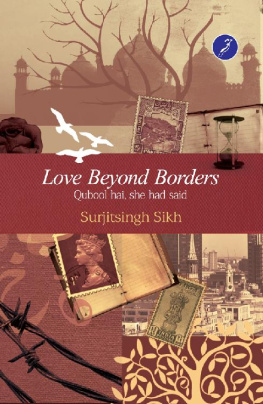Hindu Sikh Relationship Ram Swarup
Pages
Hindu Sikh Relationship Ram Swarup
Ram Swarup
This book was produced in EPUB format by the Internet Archive.
The book pages were scanned and converted to EPUB format automatically. This process relies on optical character recognition, and is somewhat susceptible to errors. The book may not offer the correct reading sequence, and there may be weird characters, non-words, and incorrect guesses at structure. Some page numbers and headers or footers may remain from the scanned page. The process which identifies images might have found stray marks on the page which are not actually images from the book. The hidden page numbering which may be available to your ereader corresponds to the numbered pages in the print edition, but is not an exact match; page numbers will increment at the same rate as the corresponding print edition, but we may have started numbering before the print book's visible page numbers. The Internet Archive is working to improve the scanning process and resulting books, but in the meantime, we hope that this book will be useful to you.
The Internet Archive was founded in 1996 to build an Internet library and to promote universal access to all knowledge. The Archive's purposes include offering permanent access for researchers, historians, scholars, people with disabilities, and the general public to historical collections that exist in digital format. The Internet Archive includes texts, audio, moving images, and software as well as archived web pages, and provides specialized services for information access for the blind and other persons with disabilities.
Created with abbyy2epub (v.1.7.6)
February, 1985
PRICE : Rf .3.C0
HINDU-SIKH RELATIONSHIP
RAM SWARUP
VOICE OF INDIA
2/18, Ansari Road, New Delhi - 110 002.
1st Edn.: 1985 Pdf: 2015.
INTRODUCTION
Sikhs have always been honoured members of Hindu society. Hindus at large have always cherished the legacy left by the Gurus and venerated Sikh Gurudwaras no less than the shrines of any other Hindu sect. There has never been any bar on inter-marriage, inter-dining and many other modes of inter-mingling between the parent Hindu society on the one hand and the Sikh community on the other. Hindus and Sikhs share a common cultural heritage and a common historical consciousness of persecutions suffered and freedom struggles fought.
Sikh Spirituality
The Sikh sect was founded by Guru Nanak Dev (1469-1538 A.D.) and promoted further by nine other Gurus, the last of whom, Govind Singh (b. 1675), died in 1708 A.D. Guru Nanak came from a Vaishnava family in that part of the Punjab which went to Pakistan after the partition in 1947. He was born at a time when the sword of Islamic invaders had already swept over the length and breadth of India and done immeasurable damage not only to the shrines and symbols of Hinduism but also to the self-confidence of Hindus. The Punjab alongwith North-West Frontier and Sindh had suffered more heavily than elsewhere. Many Hindus in these provinces had been converted to Islam by force. The rest had been reduced to second class citizens who could not practise their religion publicly without inviting persecution at the hands of Muslim theologians and tyrants.
It was in this atmosphere that Guru Nank asserted the superiority of his ancestral spirituality as against Islamic monotheism which had divided mankind into hostile camps
and set children of the same Divinity at each others throats. This was an act of great courage because Islam prescribed the penalty of death for anyone who said that Hinduism was a religion as good as Islam, not to speak of saying that Hinduism was superior. Many Hindus had been put to death for uttering such a blasphemy.
What Guru Nanak had proclaimed was, however, a part of the Hindu response to the Islamic onslaught. The response was two-pronged. While Hindu warriors fought against Islamic invaders on many a battlefield all over the country, Hindu saints and sages created a country-wide spiritual upsurge which came to be known as the Bhakti Movement. The massage of this Movement was the same everywhere, based as it was on the Vedas, the ItihasaPurana and the Dharma-Shastras. The only variation on the central theme was that while most schools of Bhakti deepened the spirit behind outer forms of worship, some others laid greater emphasis on advaitic mysticism as expounded in the Upanishads and the various traditions of Yoga. The latter schools alone could flourish in the Punjab and the rest of the North-West which had been denuded of Hindu temples and where ritual practices were forbidden by the Muslim rulers. It was natural for Guru Nanak to be drawn towards this school in the course of his spiritual seeking and sing its typical strains in his own local language.
The Bhakti Movement produced many saints in different parts of the country, North and South, East and West. They spoke and sang in several languages and idioms suited to several regions. It was inevitable that their message should go forth from as many seats and centres. Guru Nanak established one such seat in the Punjab. Those who responded to his call became known as Sikhs (Sk. Shisyas, disciples). The fourth Guru, Ram Das (1574-1581 A.D.), excavated a tank which subsequently became known as Amritsar (pool of nectar) and gave its name to the city that grew around it. In due course, a splendid edifice, Harimandir
(temple of Hari), rose in the middle of this tank and became the supreme centre of the Sikh sect. Its sanctum sanctorum came to house the Adi Granth containing compositions of Sikh Gurus and a score of other Hindu saints from different parts of the country. The songs of a few Muslim sufis who had been influenced by advaita were also included in it. The compilation of the Adi Granth was started by the fifth Guru, Arjun Dev (1581-1606 A.D), and completed by the tenth Guru, Govind Singh.
There is not a single line in the Adi Granth which sounds discordant with the spirituality of Hinduism. All strands of Hinduism may not be reflected in Sikhism. But there is nothing in Sikhism its diction, its imagery, its idiom, its cosmogony, its mythology, its stories of saints and sages and heroes, its metaphysics, its ethics, its methods of meditation, its rituals which is not derived from the scriptures of Hinduism. The ragas to which the hymns and songs of the Adi Granth were set by the Gurus are based on classical Hindu music. The parikrama (perambulation) performed by Sikhs round every Gurudwara, the dhoop (incense), deep (lamp), naivaidya (offerings) presented by the devotees inside every Sikh shrine, and the prasadam (sanctified food) distributed by Sikh priests resemble similar rites in every other Hindu place of worship. A dip in the tank attached to the Harimandir is regarded as holy by Hindus in general and Sikhs in particular as a dip in the Ganga or the Godavari.
It is this sharing of a common spirituality which has led many Hindus to worship at Sikh Gurudwaras as if they were their own temples. Hindus in the Punjab regard the Adi Granth as the sixth Veda, in direct succession to the Rik, the Sama, the Yajus, the Atharva and the Mahabharata. A Hindu does not have to be a Sikh in order to do homage to the Adi Granth and participate in Sikh religious rites. Similarly, till recently Sikhs visited temples of various other Hindu sects, went to Hindu places of pilgrimage and cherished the cow together with many other symbols of Hinduism. Religion has
never been a cause of conflict between Sikh and non-Sikh Hindus.
Sikh History
Guru Nanaks message came like a breath of fresh breeze to Hindus in the Punjab who had been lying prostrate under Muslim oppression for well-nigh five centuries. They flocked to the feet of the Sikh Gurus and many of them became initiated in the Sikh sect. The sect continued to grow till it spread to several parts of the Punjab, Sindh and the North-West Frontier. Gurudwaras sprang up in many places. The non-Sikh Hindus whose temples had been destroyed by the Muslims installed the images of their own gods and goddesses in many Sikh Gurudwaras. The Hindu temples which had survived welcomed the Adi Granth in their precincts. In due course, these places became community centres for Hindu society as a whole.


